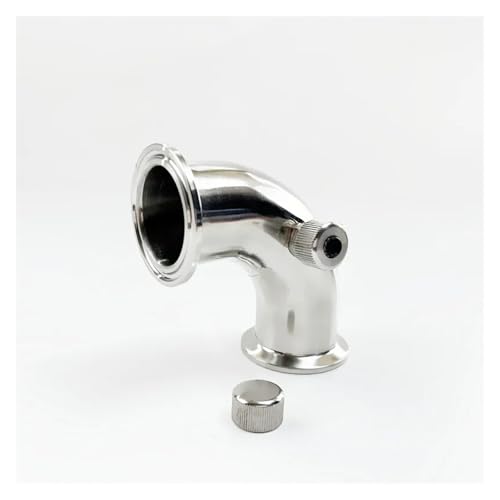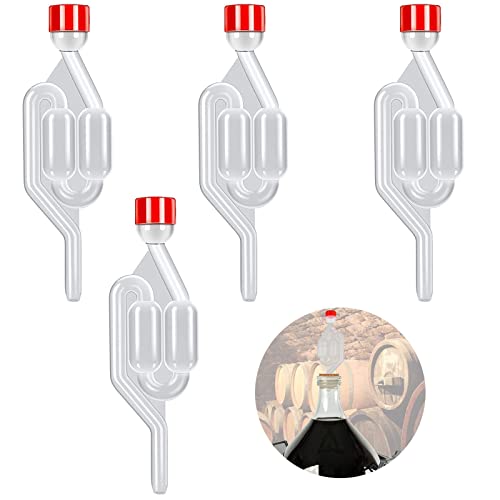You are using an out of date browser. It may not display this or other websites correctly.
You should upgrade or use an alternative browser.
You should upgrade or use an alternative browser.
stepping up a starter
- Thread starter Brycey
- Start date

Help Support The Homebrew Forum:
This site may earn a commission from merchant affiliate
links, including eBay, Amazon, and others.
morethanworts
Landlord.
Let the 1L ferment right out, then chill it for a few days to get all the yeast to clear down. Allow to rise back to pitching temp on the same day as making 4L of 1.040 wort from DME and chill it to pitching temp. Decant all but the last bit of 'beer' from the 1L starter, swish well, and mix with the 4L in whatever you're going to put it in. Ferment right out, chill down, bring back up to temp on brewday; once your boil is on, decant, restart with a bit of cooled wort from early in the boil, finish your brew, pitch. I hop I haven't missed anything too critical there...
morethanworts
Landlord.
Brycey said:Cheers mate
Since i'll be fermenting the pilsner at around 10oc should i do the starters at this temp as well?
Cheers
B
I don't think so. The job is to produce healthy yeast in quantity, not to produce the desirable clean beer that 10C will produce in the final beer. However, I will defer to someone with experience of lager starters.
rpt
Brewing without a hat
You are growing yeast not making beer so you do not need to do it at lager temperatures. The Yeast book recommends 22C as striking a good balance of health and efficient propagation of both lager and ale yeasts.
calumscott
Regular.
- Joined
- Sep 12, 2011
- Messages
- 311
- Reaction score
- 32
Brycey said:Cheers mate
Since i'll be fermenting the pilsner at around 10oc should i do the starters at this temp as well?
Cheers
B
Hmmmm. I'd be tempted, if you have the time, to build your starter at fermentation temp, that way you have trained yeast that will be the best they can in your ten degree wort.

£63.25
HJBFZZBD Sanitary clamp 1.5" (38mm) FlangeOD50.5mm Sanitary Tri-Clamp 90-Degree Pipe With Middle Nipple And Electronic Thermometer, Stainless Steel 304 Home brewing(Without Thermometer)
DAN CHENG XIAN PENG SHI DA SHANG MAO DIAN

£11.95
£14.99
WATER COMPREHENSIVE GUIDE (Brewing Elements): A Comprehensive Guide for Brewers
Amazon.co.uk

£15.96
£16.99
The Brew Your Own Big Book of Clone Recipes: Featuring 300 Homebrew Recipes from Your Favorite Breweries
Amazon.co.uk

£14.76
Digital Temperature Watch Heating Thermometer Home Brewing Tools for Wine Bottle
B&D DIRECT STORE

£437.77
HMCOCOOFM 4L 4" OD119mm * 1.5" OD50.5mm Copper Onion Head For Homebrewing,Thickness 1.5mm (With Thermometer)
weifangguanhuawangluokejiyouxiangongsi

£73.98
Sanitary clamp 2" (51mm) OD64mm Sanitary Tri-Clamp 90-Degree Pipe With Nipple And Electronic Thermometer, Stainless Steel 304 Home brewing(Without Thermometer)
DAN CHENG XIAN PENG SHI DA SHANG MAO DIAN

£13.58
Banziaju Wine Making Supplies, 18" Auto Siphon Hose For Water Homebrew Siphon Pump With Tubing And Clamp Clear Wine Siphon For Beer Wine Making Kit
Jian Shi Xian Chao Mei Shang Mao You Xian Gong Si

£14.25
£18.99
How to Brew: Everything You Need to Know to Brew Great Beer Every Time
Amazon.co.uk

£6.89 (£344.50 / kg)
£7.51 (£375.50 / kg)
2x Mangrove Jack’s Craft Series Mead Yeast M05 (10g)
do-it-at-home

£14.66 (£147.75 / kg)
Spicy World Tartaric Acid Pure 3.5oz - Top Grade, USP Certified, Food Grade, Vegan - Perfect for Wine Making, Mead
Amazon US

£10.49 (£349.67 / kg)
£11.96 (£398.67 / kg)
Mangrove Jack 3X ’s Craft Series Mead Yeast M05 (10g)
Almost Off Grid

£63.25
Sanitary clamp 1.5" (38mm) OD50.5mm Sanitary Tri-Clamp 90-Degree Pipe With Nipple And Electronic Thermometer, Stainless Steel 304 Home brewing(Without Thermometer)
DAN CHENG XIAN PENG SHI DA SHANG MAO DIAN

£32.95
£34.95
DIAH DO IT AT HOME Beer & Wine Making Starter Kit - Basic Equipment - All You Need in One Box Homemade Beer & Wine Home Brewing
do-it-at-home
rpt
Brewing without a hat
How will the yeast learn? Maybe over many generations natural selection will do this but not in the time it takes to make a starter. As I said above, the advice is to do it around 22C for ale and lager yeasts.calumscott said:I'd be tempted, if you have the time, to build your starter at fermentation temp, that way you have trained yeast that will be the best they can in your ten degree wort.
calumscott
Regular.
- Joined
- Sep 12, 2011
- Messages
- 311
- Reaction score
- 32
How many generations in a starter? Stressing yeast is one of the big contributors to off flavours isn't it? So surely best if fermenting at 10, to grow the starter at 10?
rpt
Brewing without a hat
I'm going by the Yeast book p137. Low temperatures will mean very slow and limited growth so you won't manage to grow enough yeast. High temperatures are bad but 22C is not high. Off flavours are not an issue as you are discarding the fermented wort. Even if you pitch the whole starter it is a small proportion of the total beer brewed.
morethanworts
Landlord.
rpt said:I'm going by the Yeast book p137. Low temperatures will mean very slow and limited growth so you won't manage to grow enough yeast. High temperatures are bad but 22C is not high. Off flavours are not an issue as you are discarding the fermented wort. Even if you pitch the whole starter it is a small proportion of the total beer brewed.
Having checked my copy of Yeast, yes. And page 137 confirms that this is true for both lager and ale strains. However, just over the page on 138 it states that if your starter volume is greater than 5% of the main batch, you should definitely decant first... Not pitch the whole thing.
rpt
Brewing without a hat
If it's 4L of starter for a 23L brew then, yes, you should definitely decant before pitching. But this doesn't affect the advice on temperature.
Similar threads
- Replies
- 9
- Views
- 1K











![BREWING THERMOMETER STICKERS ACCURATELY MONITOR FERMENTING BEER & WINE LIQUID TEMPERATURES 5PCS HOME BREW SPIRITS WINE LCD ADHESIVE [US]](https://m.media-amazon.com/images/I/311DDjo2X3L._SL500_.jpg)















